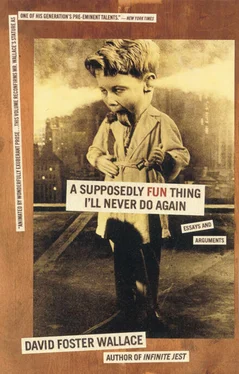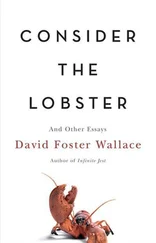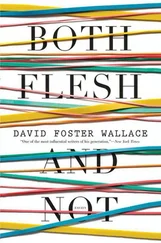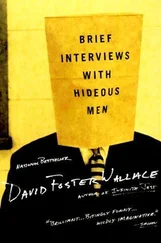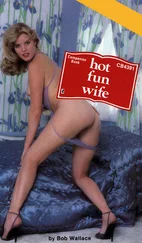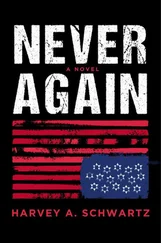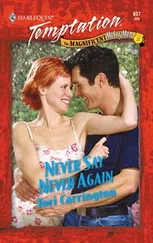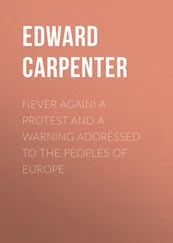“No one sees the barn,” he said finally.
A long silence followed.
“Once you’ve seen the signs about the barn, it becomes impossible to see the barn.”
He fell silent once more. People with cameras left the elevated site, replaced at once by others.
“We’re not here to capture an image. We’re here to maintain one. Can you feel it, Jack? An accumulation of nameless energies.”
There was an extended silence. The man in the booth sold postcards and slides.
“Being here is a kind of spiritual surrender. We see only what the others see. The thousands who were here in the past, those who will come in the future. We’ve agreed to be part of a collective perception. This literally colors our vision. A religious experience in a way, like all tourism.”
Another silence ensued.
“They are taking pictures of taking pictures,” he said. 18
I quote this at such length not only because it’s too good to edit but also to draw your attention to two relevant features. One is the Dobyns-esque message here about the metastasis of watching. For not only are people watching a barn whose only claim to fame is being an object of watching, but the pop-culture scholar Murray is watching people watch a barn, and his friend Jack is watching Murray watch the watching, and we readers are pretty obviously watching Jack the narrator watch Murray watching, etc. If you leave out the reader, there’s a similar regress of recordings of barn and barn-watching.
But more important are the complicated ironies at work in the scene. The scene itself is obviously absurd and absurdist. But most of the writing’s parodic force is directed at Murray, the would-be transcender of spectation. Murray, by watching and analyzing, would try to figure out the how and whys of giving in to collective visions of mass images that have themselves become mass images only because they’ve been made the objects of collective vision. The narrator’s “extended silence” in response to Murray’s blather speaks volumes. But it’s not to be taken as implying sympathy with the sheeplike photograph-hungry crowd. These poor Joe Briefcases are no less objects of ridicule for the fact that their “scientific” critic is himself being ridiculed. The narrative tone throughout is a kind of deadpan sneer, irony’s special straight face, w/ Jack himself mute during Murray’s dialogue — since to speak out loud in the scene would render the narrator a part of the farce (instead of a detached, transcendent “observer and recorder”) and so himself vulnerable to ridicule. With his silence, DeLillo’s alter ego Jack eloquently diagnoses the very disease from which he, Murray, barn-watchers, and readers all suffer.
i do have a thesis
I want to persuade you that irony, poker-faced silence, and fear of ridicule are distinctive of those features of contemporary U.S. culture (of which cutting-edge fiction is a part) that enjoy any significant relation to the television whose weird pretty hand has my generation by the throat. I’m going to argue that irony and ridicule are entertaining and effective, and that at the same time they are agents of a great despair and stasis in U.S. culture, and that for aspiring fiction writers they pose especially terrible problems.
My two big premises are that, on the one hand, a certain subgenre of pop-conscious postmodern fiction, written mostly by young Americans, has lately arisen and made a real attempt to transfigure a world of and for appearance, mass appeal, and television; and that, on the other hand, televisual culture has somehow evolved to a point where it seems invulnerable to any such transfiguring assault. Television, in other words, has become able to capture and neutralize any attempt to change or even protest the attitudes of passive unease and cynicism that television requires of Audience in order to be commercially and psychologically viable at doses of several hours per day.
image-fiction
The particular fictional subgenre I have in mind has been called by some editors post-postmodernism and by some critics Hyperrealism. Some of the younger readers and writers I know call it Image-Fiction. Image-Fiction is basically a further involution of the relations between lit and pop that blossomed with the ’60s’ postmodernists. If the postmodern church fathers found pop images valid referents and symbols in fiction, and if in the ’70s and early ’80s this appeal to the features of mass culture shifted from use to mention — i.e. certain avant-gardists starting to treat of pop and TV-watching as themselves fertile subjects —the new Fiction of Image uses the transient received myths of popular culture as a world in which to imagine fictions about “real,” albeit pop-mediated, characters. Early uses of Imagist tactics can be seen in the DeLillo of Great Jones Street , the Coover of Burning , and in Max Apple, whose ’70s short story “The Oranging of America” projects an interior life onto the figure of Howard Johnson.
But in the late ’80s, despite publisher unease over the legalities of imagining private lives for public figures, a real bumper crop of this behind-the-glass stuff started appearing, authored largely by writers who didn’t know or cross-fertilize one another. Apple’s Propheteers , Jay Cantor’s Krazy Kat , Coover’s A Night at the Movies, or You Must Remember This , William T. Vollmann’s You Bright and Risen Angels , Stephen Dixon’s Movies: Seventeen Stories , and DeLillo’s own fictional hologram of Oswald in Libra are all notable post-’85 instances. (Observe too that, in another ’80s medium, the arty Zelig, Purple Rose of Cairo , and sex, lies, and videotape , plus the low-budget Scanners and Videodrome and Shockers , all began to treat of mass-entertainment screens as permeable.)
It’s in the last year that the Image-Fiction scene has really taken off. A. M. Homes’s 1990 The Safety of Objects features a stormy love affair between a boy and a Barbie doll. Vollmann’s 1989 The Rainbow Stories has Sonys as characters in Heideggerian parables. Michael Martone’s 1990 Fort Wayne Is Seventh on Hitler’s List is a tight cycle of stories about the Midwest’s pop-culture giants — James Dean, Colonel Sanders, Dillinger — the whole project of which, spelled out in a preface about Image-Fiction’s legal woes, involves “questioning the border between fact and fiction when in the presence of fame.” 19And Mark Leyner’s 1990 campus smash My Cousin, My Gastroenterologist , less a novel than what the book’s jacket copy describes as “a fiction analogue of the best drug you ever took,” features everything from meditations on the color of Carefree Panty Shield wrappers to “Big Squirrel, the TV kiddie-show host and kung fu mercenary” to NFL instant replays in an “X-ray vision which shows leaping skeletons in a bluish void surrounded by 75,000 roaring skulls.” 20
One thing I have to insist you realize about this new subgenre is that it’s distinguishable not just by a certain neo-postmodern technique but by a genuine socio-artistic agenda. The Fiction of Image is not just a use or mention of televisual culture but an actual response to it, an effort to impose some sort of accountability on a state of affairs in which more Americans get their news from television than from newspapers and in which more Americans every evening watch Wheel of Fortune than all three network news programs combined.
And please see that Image-Fiction, far from being a trendy avant-garde novelty, is almost atavistic. It is a natural adaptation of the hoary techniques of literary Realism to a ’90s world whose defining boundaries have been deformed by electric signal. For one of realistic fiction’s big jobs used to be to afford easements across borders, to help readers leap over the walls of self and locale and show us unseen or — dreamed-of people and cultures and ways to be. Realism made the strange familiar. Today, when we can eat Tex-Mex with chopsticks while listening to reggae and watching a Soviet-satellite newscast of the Berlin Walls fall — i.e., when damn near everything presents itself as familiar — it’s not a surprise that some of today’s most ambitious Realist fiction is going about trying to make the familiar strange . In so doing, in demanding fictional access behind lenses and screens and headlines and reimagining what human life might truly be like over there across the chasms of illusion, mediation, demographics, marketing, imago, and appearance, Image-Fiction is paradoxically trying to restore what’s taken for “real” to three whole dimensions, to reconstruct a univocally round world out of disparate streams of flat sights.
Читать дальше
